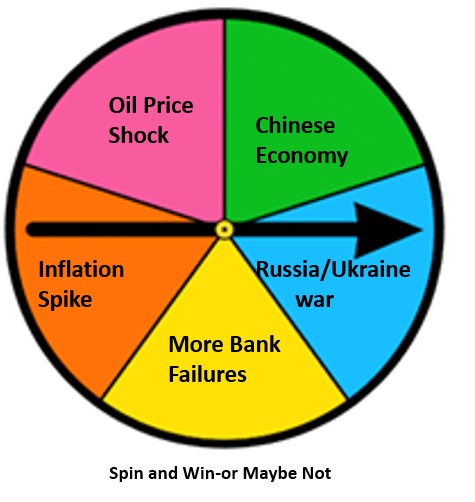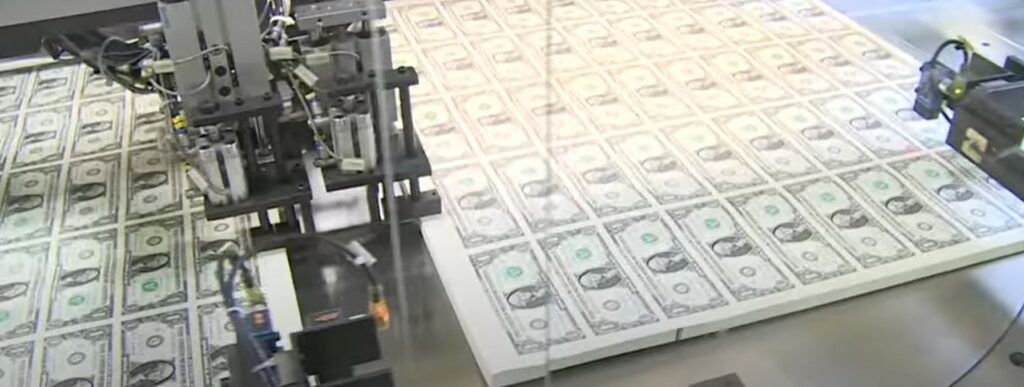
By Michael O’Neill
Markets are breathing easier now in the belief that another global financial crisis was averted.
Swiss authorities convinced UBS to take over troubled Credit Suisse Bank on March 20 at a price 50% less than Credit Suisse’s closing price on March 17. Not a bad incentive.
The Swiss National Bank took credit for the save, proclaiming that their actions, along with those of the Swiss Financial Markets Supervisory Authority (FINMA) and the government, put a halt to the crisis.
Another miracle by the Holy Trinity of Swiss banking.
Then the SNB shifted their focus to the 3.5% inflation level and hiked the overnight policy rate by 50 bps to 1.5%. For the gnomes of Zurich, everything is back to normal.
American financial authorities and regulators were patting themselves on the back as well.
The US Treasury Department, Fed, and the Federal Deposit Insurance Corporation (FDIC) concocted a strategy that guaranteed all the deposits at troubled Silicon Valley Bank (SVB), even those above the FDIC threshold of $250,000.
For now, American’s with money do not have to worry about their bank savings accounts, Treasury Secretary Janet Yellen said as much in a speech to the American Bankers Association on March 21.
She justified the Treasury’s actions in guaranteeing SVB deposits as a necessary action to protect the integrity of the banking system. She took it a step further and said, “Similar actions could be warranted if smaller institutions suffer deposit runs that pose the risk of contagion.”
Ooops! Someone must have reminded Ms Yellen that Americans have $17.7 trillion on deposit at commercial banks. That would be even a bit much for the magic money printer.

Source: Dallas Morning News-YouTube.
Ms Yellen back-pedalled faster than a hiker seeing a grizzly bear. She told a Senate hearing the very next day “I have not considered or discussed anything having to do with blanket insurance or guarantees of all deposits.”
Her remarks added another wrinkle into the health of the US commercial bank narrative. If Americans shift deposits to the safety of government bonds or the top 10 banks, what happens to the smaller banks?
Do not worry!
Fed Chair Jerome Powell opened his post-FOMC monetary policy press conference by saying “Our banking system is sound and resilient, with strong capital and liquidity.
Essentially, he said, I’m not worried about the banking system so you shouldn’t be either.
He emphasized the point by announcing the ninth consecutive interest rate hike. It was a 25 bps bump that took Fed funds to 5.0%.
But it was a “dovish hike” as the statement went from anticipating “that ongoing increases in the target range will be appropriate” to “some additional policy firming may be appropriate.”
It was also an obligatory hike if the Fed wanted to maintain some semblance of credibility. At the February meeting, the FOMC said future rate decisions would be data dependent. Since then, a series of stronger than expected economic reports, justified a 50 bp bump.
The only reason that didn’t happen is that although Powell said the banking system is sound and resilient, perhaps he was fudging things a tad.
The proof is in the second paragraph.
Policymakers were so spooked by the SVP and First Republic issues that they scratched the trite “Russia’s war against the Ukraine is causing tremendous hardship…” banality that has owned the second paragraph of every FOMC statement for the past year and replaced it with a public service announcement about the health of the banking system.
If banking issues were not a lingering concern, why kick Ukraine out of the spotlight?
Canadians are feeling just a little bit smug. Canada has six major banks that control the majority of Canadian deposits and are heavily regulated. They are not having any issues.
Canada has only 80 Canadian Deposit Insurance Corporation (CDIC) members compared to over 4,800 FDIC insured institutions in the US. The only issue for Canadian banks would be contagion from external bank woes.
The Bank of Canada Summary of Deliberations revealed, well not much. Governing Council is happy with their economic outlook and forecasts and confirmed that domestic rates will remain unchanged at the April 12 meeting.
For investors, it appears that the Canadian rate hike cycle is at an end while US rates are very close to topping out.
Let the good times roll but have an exit strategy. Long-dated, low delta options may help mitigate losses if things go pear-shaped.
US, and NATO are poking a bear- a Russian bear and the world is just an “oops” away from a shooting war. Russian’s took out a US predator drone a week ago and on March 21, Russian fighter jets intercepted a pair of long-range, nuclear-strike capable B-52 bombers near Russian airspace. Lot’s of room for mistakes.
Meanwhile, Chinese President Xi Jinping met with Vladimir Putin in Russia in a move designed to flip the bird to the US administration. China is also encroaching in the Middle East and brokered a deal between US ally Saudi Arabia and arch enemy Iran.
Oil prices likely found a bottom at $64.15, which will be confirmed on a move above $74.15, with the rally fueled by increased demand from China. Higher oil prices are inflationary and could derail hoped-for interest rate cuts.
The wheel of misfortune is spinning rapidly, and any number of geopolitical flashpoints could decimate global markets.





